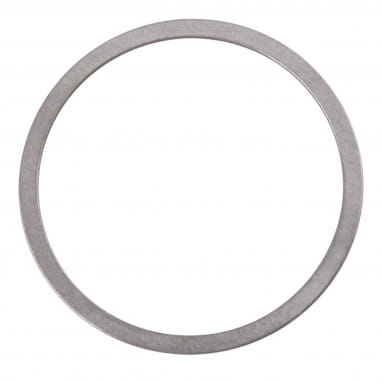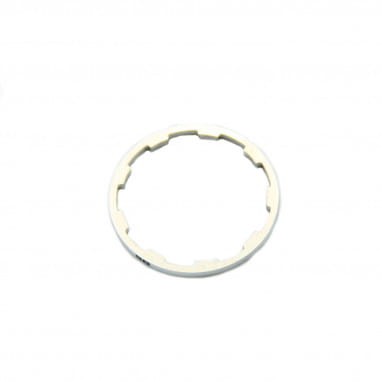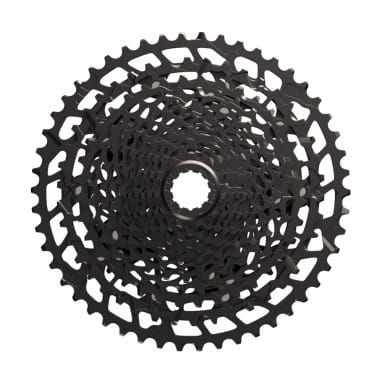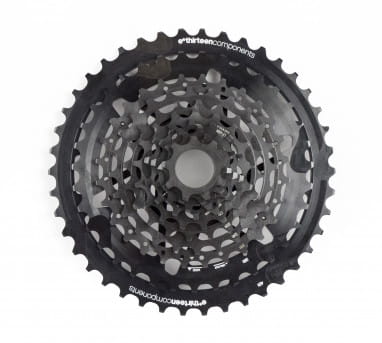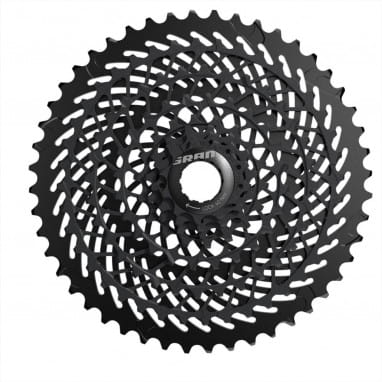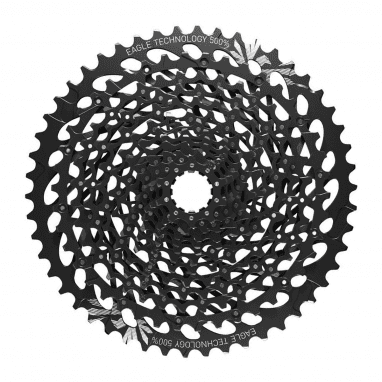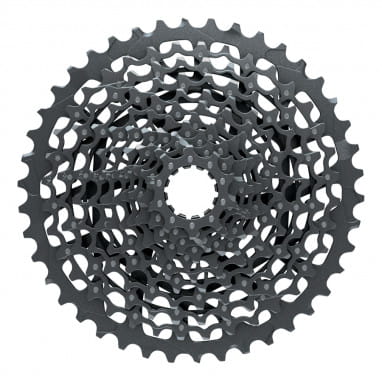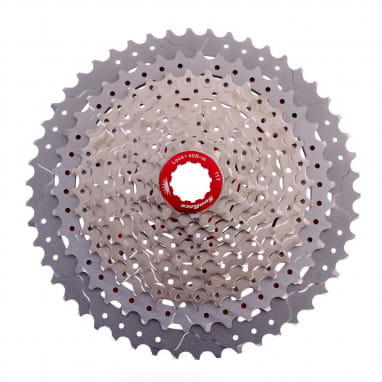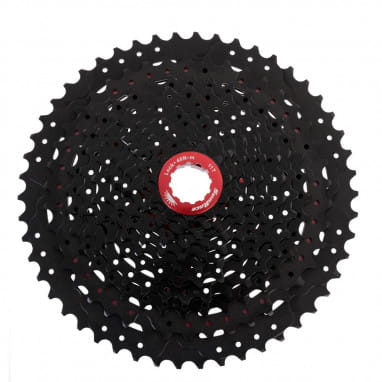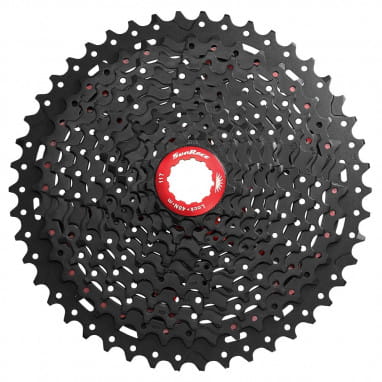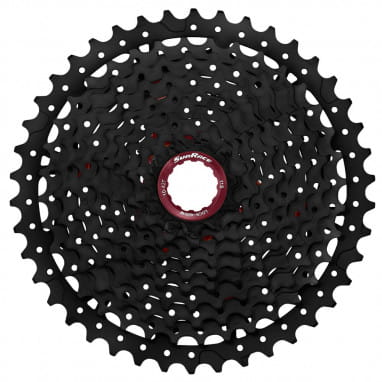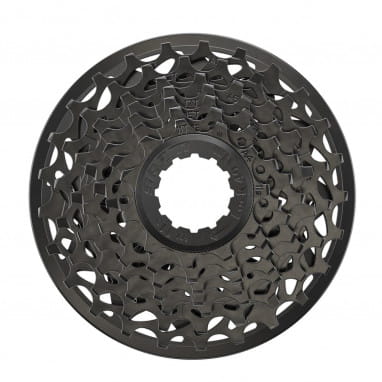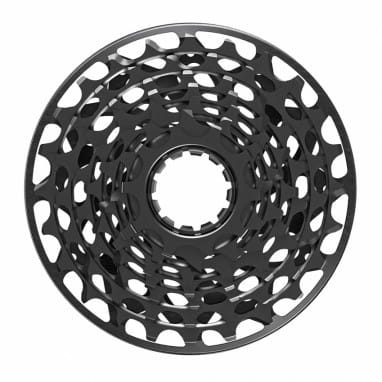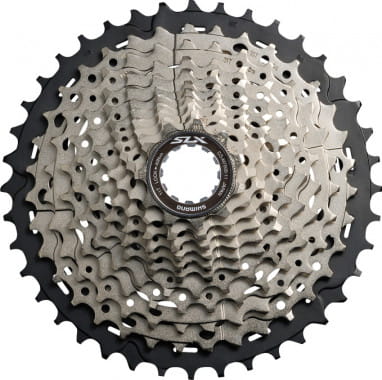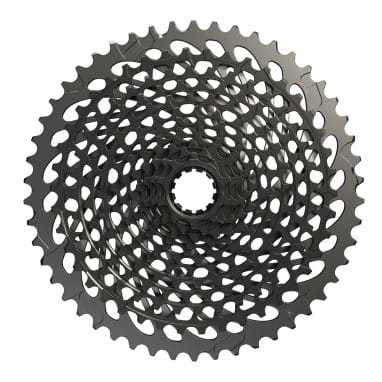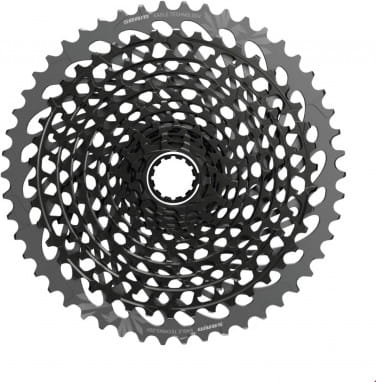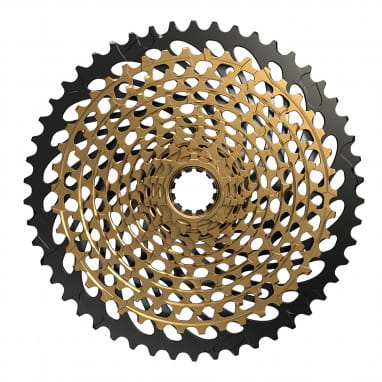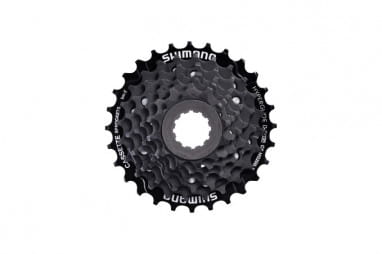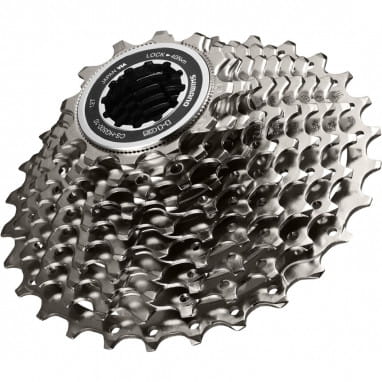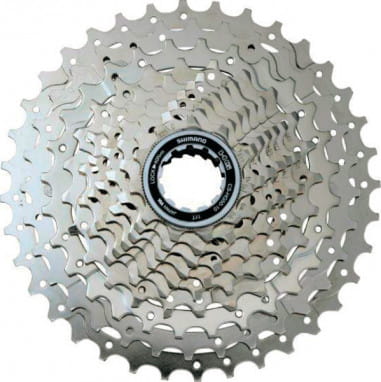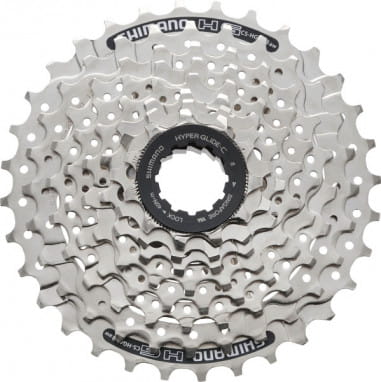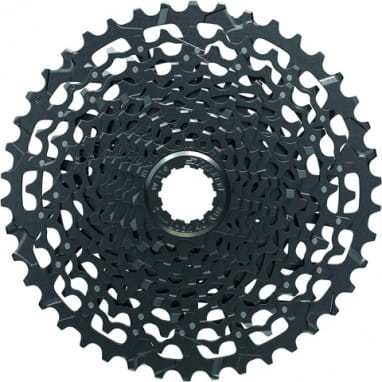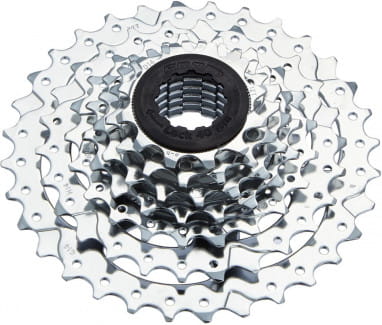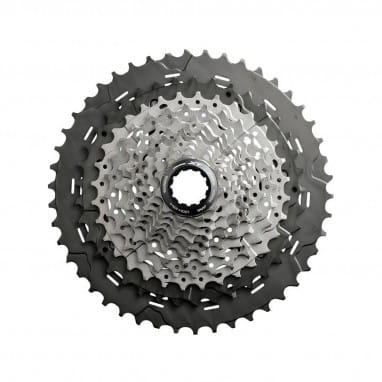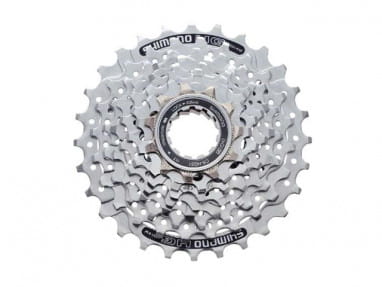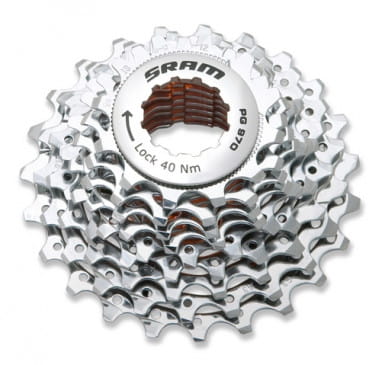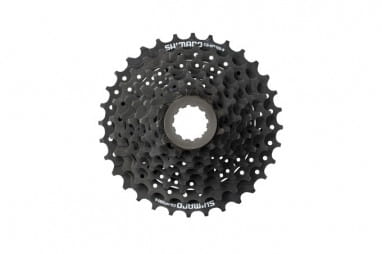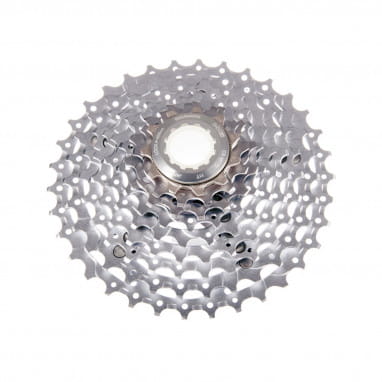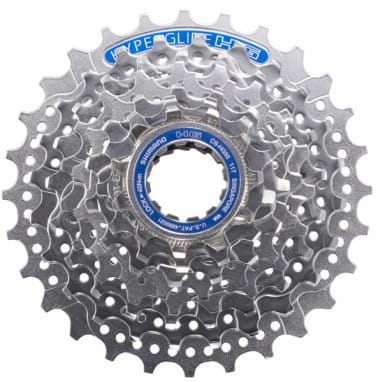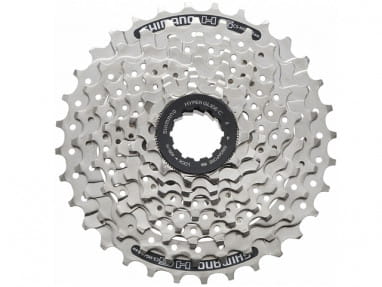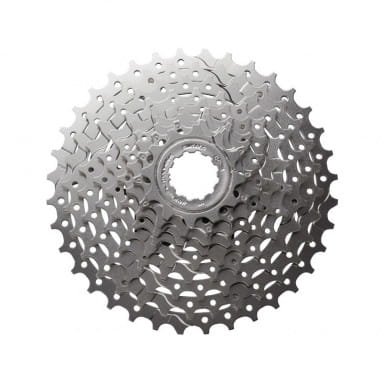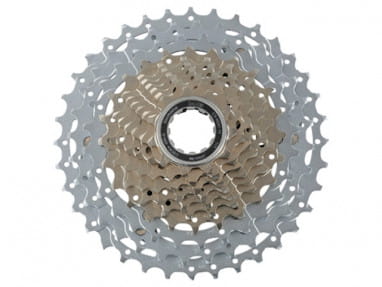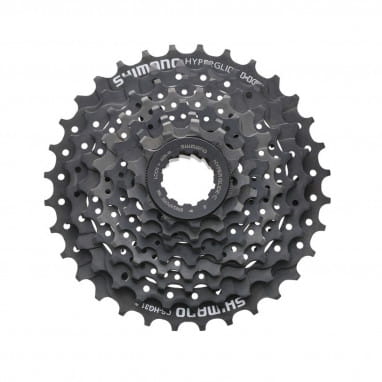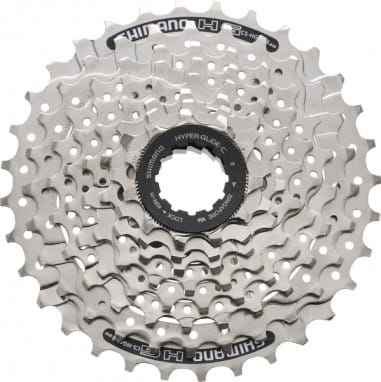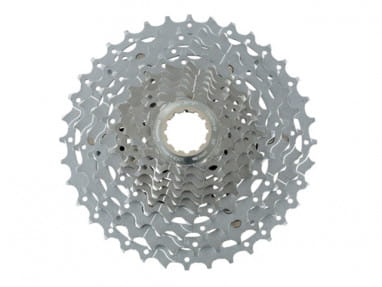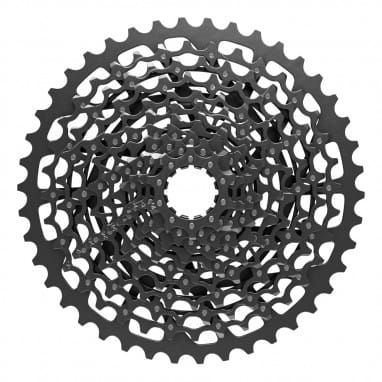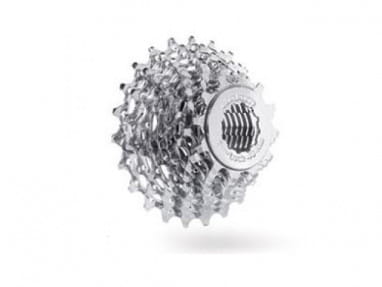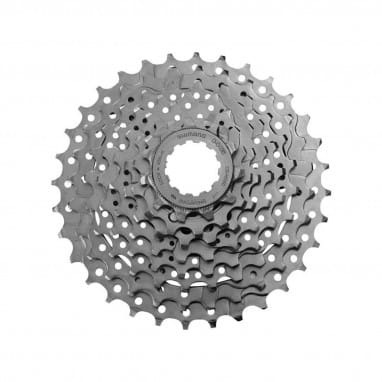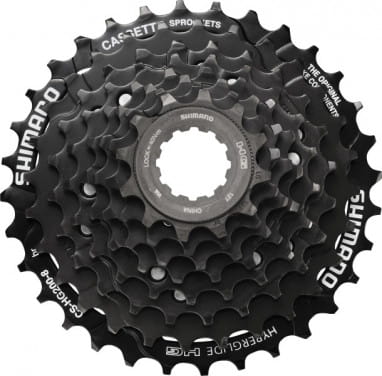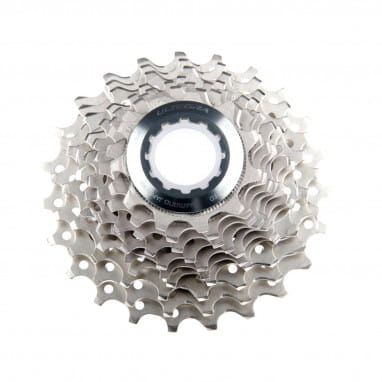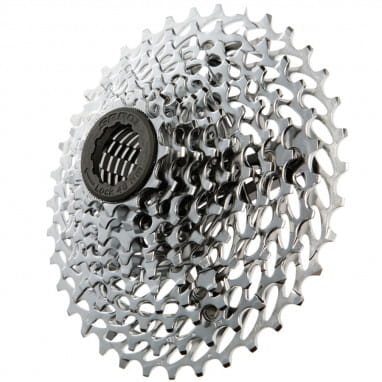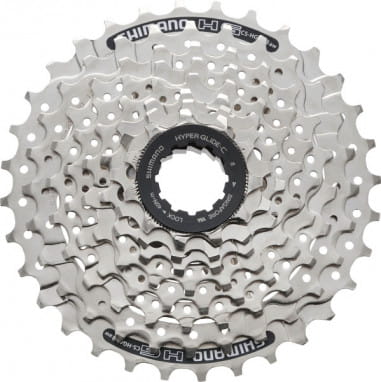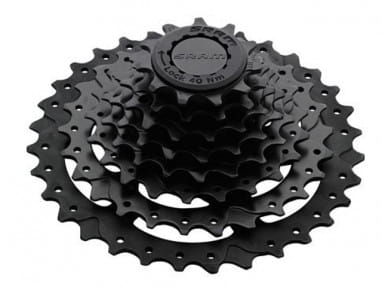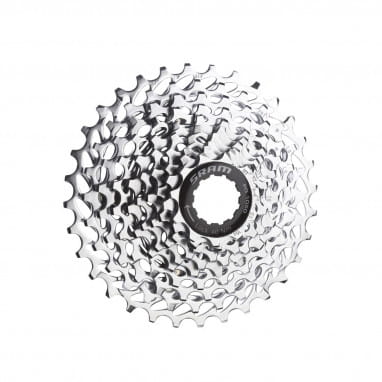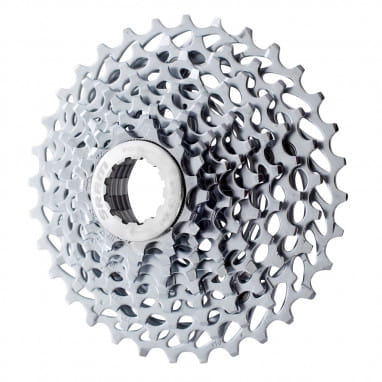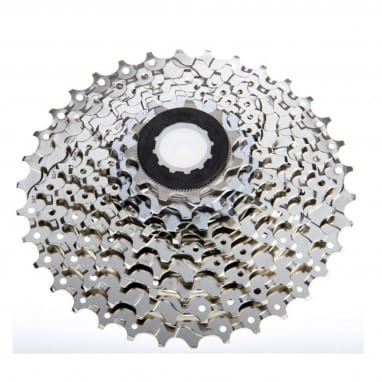The choice of a cassette is responsible for how well your bike handles rough terrain and uphill rides. Whether you want to redefine the range of your bike with a brand new cassette or need a replacement for worn down teeth, here on BMO you will find sprockets for different bike types, all purposes and from different premium manufacturers.
Cassette... as in: "cassette recorder" or "walkman"? No, far from it, these cassettes are not meant! Without a cassette your bike won't work at all! You'll have to look elsewhere for the music, this cassette makes it possible to adapt your bike to any terrain. It is the cassette that determines whether you pedal lightly in a low gear, or pedal hard in a high gear, but cover a lot of distance with just a few turns of the crank. The bicycle cassette is therefore part of the drive system of your bicycle. Doesn't sound too complicated up to this point, does it?
There are two reasons why it's worth looking into your bike's cassette. First, the teeth of the cassette are subject to constant wear. You can counteract this wear with regular cleaning and a suitable chain grease, but if your bike no longer shifts cleanly, you'll eventually be due for a new cassette. Reason two is much more pleasant: a new cassette falls under "bike tuning" - a wider range sprocket set pushes the limits of your rides quite a bit further towards the horizon, it makes you faster and more capable off-road.
Bicycle cassette and sprocket set - explanation and buying guide
What is the cassette or sprocket cluster?
A bike cassette consists of a set of gears, it is part of the bike's drivetrain, more specifically the gears. This set of gears is also called sprocket pack, because the individual gears are called sprockets . Each of these sprockets has roughly between 30 and 50 teeth on which the chain runs forward. Just for completeness, the sprockets on the pedal crank look the same, but are called chainrings. The more such sprockets and sprockets there are, the more gears your bike has. The term 9-speed cassette or 11-speed drive represents the number of sprockets in a cassette. It sits on the hub of the rear wheel.
Large sprockets, small sprockets - a matter of efficiency
Depending on which sprocket the chain is running on, a bike is easier or harder to pedal. We mentioned it briefly above: the size of the sprocket determines whether you have to pedal with little or a lot of power. Less power means you can climb steeper hills, but you have to pedal many times for each revolution of the wheels - this is then a small gear. In a high gear you can move forward faster, but the pedalling resistance is higher. The gearshift allows you to regulate your bicycle drive so that you can move forward with a comfortable mix of effort and speed.
Here's another tip for e-bikers: although an e-bike actually always rides without much effort, you shouldn't forget to use the gears! You will of course get up everywhere with assistance, but if you still adapt your pedelec to the landscape via gears, this will not only reduce your battery consumption, but also the wear and tear on the bike.
Gear chain or hub gears?
Because the chain determines the gear by its positioning on the cassette, these drives are known as chain gears. A bit simpler would be a hub gear, but it doesn't allow nearly the same range of gears. Hub gears have three, five or seven gears, with up to eleven gears available on rare occasions. Derailleurs have up to 30 gears. To find out the number of gears, you simply multiply the number of chainrings available in the front by the number of sprockets in the rear. However, since many gears overlap in efficiency, a bike with 30 gears, for example, will have about 20 gears that make a noticeable difference when pedaling.
How much cassette does my bike need?
The number of gears your bike should have depends on the terrain you want to conquer. For many different types of terrain, and especially whenever you're going uphill, many gears are a real help. If you're mainly riding around town or on the flats, a bike with fewer gears is the cheaper and more straightforward choice. This old buying guide, however, has been superseded in recent years by two
factors softening it. First, there are the ubiquitous e-bikes, which, thanks to electric propulsion, are always able to move forward somehow. As a result, they tend to have far fewer gears than a comparable purely muscle-powered bike. Apart from that, slimmer gears are mighty in right now. Many mountain bikes and road bikes that would have had at least 21-speed gears a few years ago can now get by with 1x12 gears, for another.
In the description of a bike you will often find the specification: 1x12 or 3x8, etc. 1x12 means the bike has one chainring and 12 sprockets, so 12 gears. 3x8 means the bike has 3 chainrings and 8 sprockets, so 24 gears.
You've probably come across the term 7-speed, 8-speed, ...11-speed or 12-speed from time to time. As mentioned above, the number describes the number of sprockets.
What is the range of gears?
It's not just the number of gears that matters, it's the bandwidth that tells you what your bike is capable of! The bandwidth of the gears is calculated from the number of teeth the sprockets and cogs have. A lot of bandwidth means that the distance between the lowest gear and the highest gear differs greatly, with little bandwidth the differences are more moderate. The gear ratio is the difference in size between each sprocket. The closer the gear ratio, the smoother the transitions with each shift.
Cassette buying guide
You want to change or upgrade your cassette yourself? Ok, here's the problem: choosing the right cassette is a real science! Therefore, a real buying guide would need a massive scope and several photo galleries. But the following questions will help you choose your bike cassette:
- Which freewheel does the hub of your bike have?
- Are you looking for a road bike cassette, a mountain bike cassette or cassette for a trekking bike?
- Do you want to replace or upgrade a worn out cassette?
- How many sprockets do you have now, how many teeth do the existing sprockets have?
- Who is the manufacturer of your groupset, what groupset do you have? The derailleur, chain, sprockets and cogs need to match!
- When in doubt, contact our customer service or look around in forums and guides!
Caution. Often the components of different manufacturers and shift groups are NOT compatible with each other!
...SRAM is the power
Clearly, there are other manufacturers that make excellent cassettes. But if someone is talking about their sprocket package with shining eyes, you can assume they have one from SRAM their own. SRAM Eagle gears make mountain bikers happy, that's all there is to it really
In addition, of course, there are many different cassettes from the bike giant Shimano. As always, Shimano has bike parts for a wide variety of uses, bike disciplines, and in any price range - and that goes for Shimano's cassettes, too, of course. At BMO, you'll also find cassettes from Hope or Sunrace.
Buy cassettes easily from online store
We have the most different shift groups for you in stock, you can find them at our bicycle parts nicely listed. You can filter by the different parts, choose the right cassette and order it.
